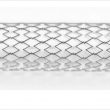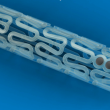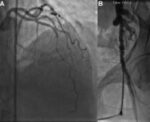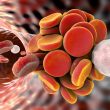Courtesy of Dr. Carlos Fava. Severe atherosclerotic disease in iliac arteries is experienced by 15% of all men and 5% of all women. TAC II recommends angioplasty for type-A, -B, and -C lesions. As regards stent type, self-expanding stent (SE, more elasticity) vs. balloon-expandable stent (SB, more radial strength), Reekers indicates superior target lesion revascularization (TLR) with SE. However, there...
SOLACI PERIPHERAL | Type Ib Endoleak Correction in Patient After Minimally Invasive Hybrid Treatment in Type A Aortic Disection
Here is a new SOLACI PERIPHERAL Case! In this opportunity, Dr. Daniel Zanuttini (Arg.) presents “Type Ib Endoleak Correction in Patient After Minimally Invasive Hybrid Treatment in Type A Aortic Disection”. This is the 8th clinical case presented by SOLACI Peripheral. The purpose of this space is to encourage and further the exchange of experiences...
SOLACI PERIPHERAL | 2nd Clinical Case: Juxtarenal Abdominal Aortic Aneurysm
SOLACI’s Department of Peripheral Endovascular Interventions brings a new challenging clinical case for the whole Latin American medical community so as to continue fostering and sharing scientific knowledge and experience among peers. Tell us what you think about this case and its resolution using the comments section in this post, and answer the questions featured...
Pacemaker Implantation After TAVI Raises Costs But Not the Incidence of Adverse Events
This new meta-analysis did not manage to prove whether permanent pacemaker implantation after transcatheter aortic valve replacement (TAVR) raises the rates of mortality, infarction, or stroke. Implantation could only be associated to a lesser recovery of ventricular function after the procedure, something that had already been observed in previous studies. Patients who required a pacemaker undoubtedly...
Bioresorbable Scaffolds: Promising in Peripheral Territory
Bioresorbable Vascular Scaffolds (BVS) could change the paradigm of peripheral angioplasty according to several small studies suggesting these everolimus eluting devices could significantly improve symptoms in patients with intermittent claudication. [plain] Three year outcomes of the ESPRIT I trial, presented at VIVA 2016 (held in Las Vegas) showed there were no new events between...
High doses of radiation also in peripheral procedures
Original title: Patient radiation exposure during percutaneous endovascular revascularization of the lower extremity. Reference: Einat Segal et al. Journal of Vascular Surgery. Article in press. Percutaneous endovascular revascularization is emerging as the first line treatment for peripheral artery disease for both intermittent claudication and chronic critical limb ischemia. Radiation doses for these interventions, usually prolonged, have not been...
Spontaneous coronary artery dissection (SCAD) is associated with fibro-muscular dysplasia in other territories
Original title: Spontaneous Coronary Artery Dissection. Prevalence of Predisposing Conditions Including Fibromuscular Dysplasia in a Tertiary Center Cohort Reference: Jacqueline Saw, et al. J Am Coll Cardiol Intv 2013;6:44 –52 Non atherosclerotic spontaneous coronary artery dissection (Non atherosclerotic SCAD) is a rare disease that is associated with acute myocardial infarction and sudden death. This condition is more common...
SOLACI PERIPHERAL | 5th Clinical Case: Abdominal Aortic Aneurysm with Hostile Neck
New clinical case from SOLACI PERIPHERAL! This time, we present a case featuring an abdominal aortic aneurysm with hostile neck. With this, we wrap up an intense year during which we published 5 clinical cases to deepen and stimulate the exchange between Latin American interventionist colleagues. Tell us what you think about this case using...
Antithrombotics after Venous Stenting: Rather Different from Coronary Artery Stenting
Should the Antithrombotic/antiplatelet therapy following 10.0 by 60 mm stent implantation to the subclavian vein of a chronic kidney patient be the same as one following a 3.0 by 18 mm stent implantation to the second segment of the left anterior descending artery of this same patient? The daily practice of many interventional cardiologists performing...
“Ad Hoc” PCI during TAVR: No Impact on Safety or Long Term Outcomes
According to a recent study published in Circulation Cardiovascular Interventions, screening for coronary artery disease (CAD) with an invasive coronary angiography (as part of the protocol prior TAVR) and performing PCI and TAVR in the same session, has no impact on periprocedural safety or on long term outcomes. Study outcomes offer new hope, especially as regards using TAVR...
- 1
- 2









